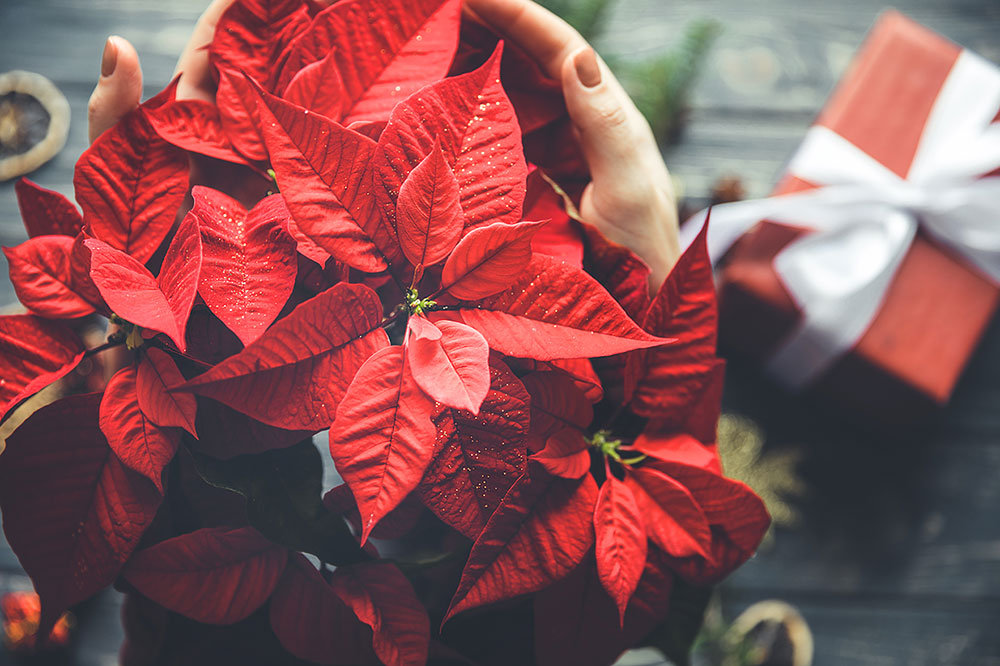This coming Wednesday, December 12th, is National Poinsettia Day. So here are four interesting facts about everyone’s favorite holiday flower.
- Poinsettia, botanically Euphorbia Pulcherrima, is named for Dr. Joel Roberts Poinsett, the first U.S minister to Mexico. He was an avid amateur botanist who, in the 1820s, sent home to South Carolina cuttings of a beautiful plant he’d seen in bloom. By the early 1920s, the poinsettia had already become a holiday fixture.
- The poinsettia, known in Mexico as Flor de Noche Buena or Flower of Christmas Eve, has been associated with Christmas since the 16th century. Legend tells of a poor child who couldn’t afford to bring a gift to the church to celebrate the nativity. Angels told the child that even a humble gift is acceptable if given in love, so the child picked a handful of weeds along the roadside to place on the altar. The weeds sprouted beautiful bright red flowers.
- The beautiful brightly colored flowers of poinsettias are not flowers at all, but “bracts”—brightly colored leaves. The true flowers are the little yellow fuzzy things in the middle.
- Poinsettias are NOT as poisonous as you think they are. According to POISINDEX (the primary source used by Poison Control Centers), a 50-pound child would actually have to eat around 500 leaves to have a toxic reaction. It’s still best to discourage pets and children from tasting it as it can cause nausea and diarrhea. If you have sensitive skin or a latex allergy however, the sap can cause contact dermatitis.
Poinsettia Care
To keep your poinsettia looking its best, keep the plant in a well-lit location. Do not let the poinsettia wilt from lack of water, but do allow the soil surface to dry on top before you add water. If it came wrapped in foil, poke holes in the bottom so excess water can drain.
Poinsettias can be tricky to bloom again because they are what is called photo-periodic—they need a period of 12 to 16 hours of total uninterrupted darkness every day for a couple of months before they will bloom.
If you want to try to bloom them next year, keep them in a sunny window for the spring and summer. You can prune them back to keep them full and bushy at the beginning of summer. You can, if desired, place them outside around the middle of May until the first of September when you move them inside for the short day/long night treatment.
Starting around the first of September, they need to go into a closet or totally unused spare room from five at night until eight in the morning. You could also cover them with a large box. From eight in the morning until five at night, they need to be in a sunny window. At night, street lights shining in a window, the flickering light from a television, even a light turning on and off can interrupt this cycle.
We have a great selection of this traditional holiday flower (and even some not-so-traditional new colors) so come and find the perfect one for you.

